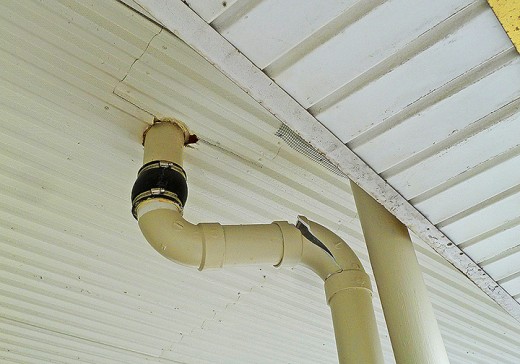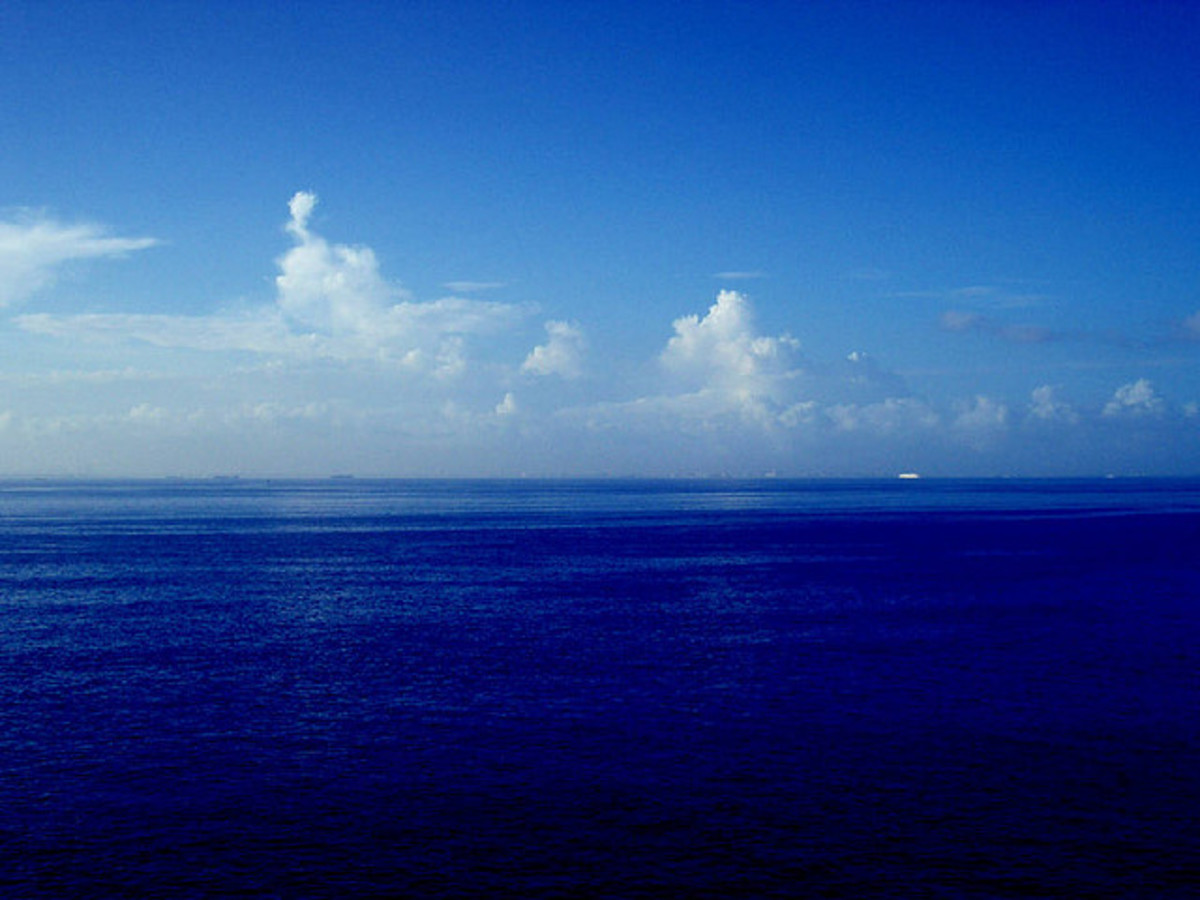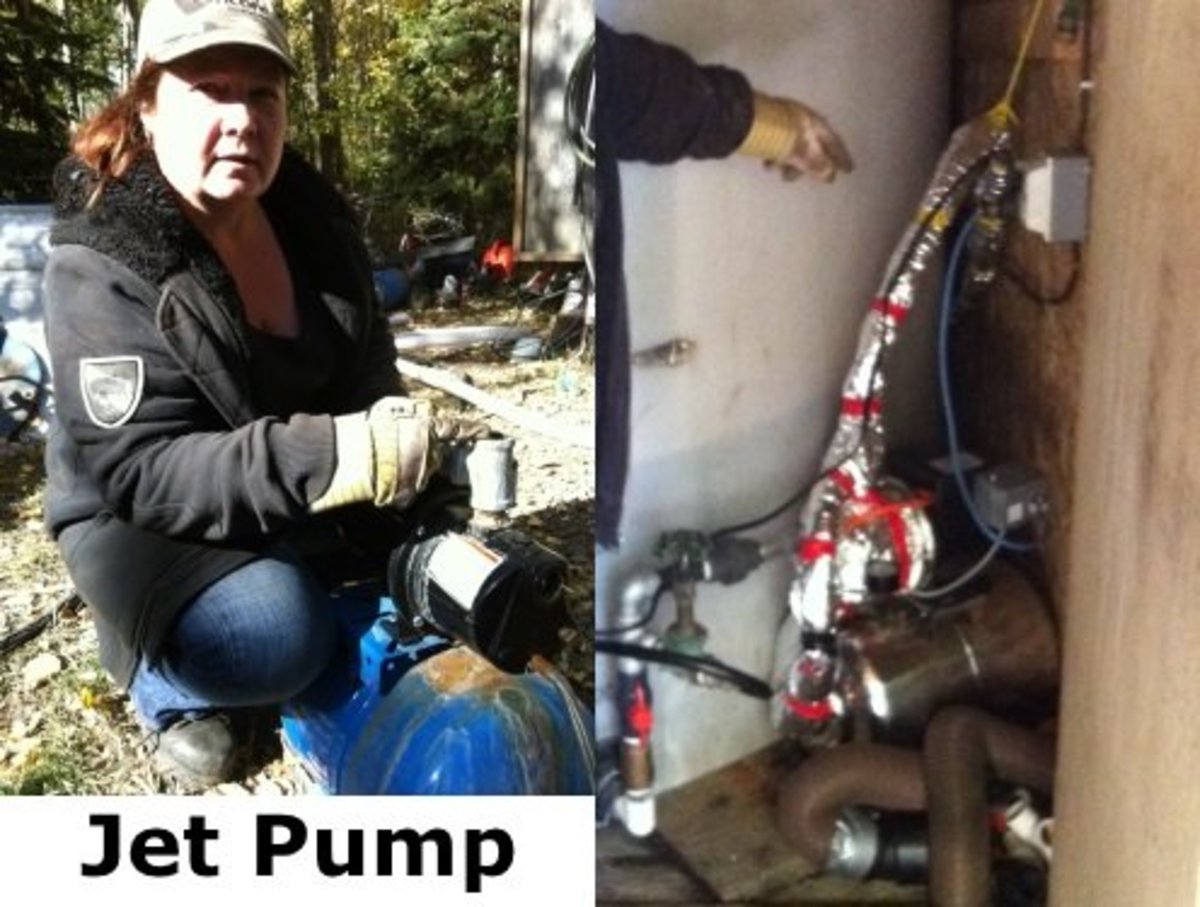Stormwater Management Basics 3
Poor Design & Maintenance

Geology
In addition to understanding the ways in which water might move across the topography of a site, the stormwater management system designer must also develop an understanding of the ways in which water might move through the geology of a site. The nature of the earth we encounter below the surface of the ground is not uniform the world over. It is often, in fact, not even uniform across a relatively small patch of ground, say 5 or 10 acres. First, the three main types of rock one might encounter — sedimentary, igneous or metamorphic — can be found with any of a vast array of chemical and elemental compositions. Rock may be encountered as a broad thick relatively uniform layer beneath the ground, or as a fractured or folded ‘blanket’ of rock of varying depth. Rock formations may be isolated, or may be cross-cut by subterranean intrusions or fractures. The underground variability of rock — and such features as its strength, brittleness, or tendency to shift — may determine exactly how we eventually develop a site or where we bear our most significant structures.
But is generally the non-rocky soils of a potential development site with which we must be most concerned, for soils are far more likely to shift under loads, absorb or release water, and expand or contract under varying conditions. From a geological standpoint, soils comprise everything that is not solid unmoving bedrock, from particles of rock and gravel, through sands and loam and humus and silt and clay.
Soil Composition
The soils of our planet are made up of a wide range of constituent parts. Water is, of course, present in virtually all soils to some degree. Finely ground particles of rock and minerals of all types also make their way into soils, in varying sizes and types, and to varying degrees. In soils mixes, rock and mineral particles may be referred to as gravels. Sand, defined as any naturally occurring granular material of relatively small size, also joins the typical soils mix. While most sand consists of finely divided particles of quartz or silica (also known as SiO2 — silicon dioxide), some consists primarily of the calcium carbonate originating from corals and the shells of crustaceans. Silt is yet another soils component. Most often of quartz and feldspar, silt granules are smaller than those of sand, yet larger than those of clay. Silt particles feel like flour when dry, but become slippery when wet, and can feel plasticky yet non-sticky. Clay consists of any of a number of hydrous aluminum phyllosillicate minerals, often with minor amounts of magnesium, alkaline earths, alkali metals, iron and organic matter. Clay is distinguished by its very small particle size, and by the fact that it displays plasticity and chemical activity in the presence of water. While this latter feature enables us to, for example, form and fire clay into pottery, brick, and many other useful items, it also allows clay in soils to perform variably (and problematically) as water content changes. Humus is any organic matter in the soils mix that has achieved stability and will decompose no further. Characteristically black or dark brown, spongy and amorphous, humus has a high carbon concentration. It is often used as to ‘amend’ or improve soils, due to its ability to increase moisture retention, microporosity, aeration, and soil structure, as well as to provide nutrients for microorganisms and plants. Organic materials that have not yet fully decomposed (sometimes referred to as compost) may also occupy a place in some soils mixes. These may also prove problematic in soils, in that as they undergo further decomposition changes, overall soils performance may be affected.
Fines are any fine particles of rock, mineral or other soil constituent that has a size smaller than about 3/1000ths inch (3/40ths mm). If a soil mix has more than about 1/8th comprised of fines, it may adversely affect the soil’s overall performance.
Loam is a particular mix of soil in which the proportions of the primary soil components approximate 2 parts sand to 2 parts silt to1 part clay. Having such proportions, loam will generally contain more moisture, humus and nutrients than sandy soil, while being easier to work and till than clayey soil, and also having greater porosity to both water and air than silty soil. Loam is thus a preferred agricultural soil mixture, one that feels crumbly and soft to the touch, and is workable across a great range of water concentrations.
Peat, or turf, is an accumulated mass of decayed and decaying plant material, with sphagnum moss being its most common primary component. Sedges and heathers may also be incorporated. Peat is generally obtained from bogs, fens, moors, mires and other wetlands. Peat may be used as a soil amendment, to increase acidity or to improve soil structure. It may also be used as a filtering material for septic tanks or urban runoff.
The Soil Profile
The configurations and layerings and thicknesses of soils and rocks and water and organic material vary widely across the globe. In any given locality, the peculiar make-up of the ground beneath our feet is known as the soil profile — and it is often depicted as an explanatory slice down through a ‘layer cake’ of our immediate vicinity. Those layers are often referred to by soil scientists and analysts as horizons. At the topmost tier of that slice will typically be topsoil, a several-foot-thick layer of a rich, moist, loose, tillable mixture of soil particles, nutrients, decaying plant material, insects and microbes. An organic layer may often underlie the topsoil. Here accrete all of the organic substances of decaying and decomposing plant and animal life — nutrients to feed the coming generations. A gray layer lies still deeper, bearing increased mineral content derived from eons of settlement, erosion and percolation. Beneath the gray layer may lie a gray mottled layer, containing many rootlets, as well as soil constituents being slowly washed down from above. Parent rock — that is, the primary rock formation that has given birth to the local soils — may lie next, with, finally, bedrock lying still further down. Depending on one’s particular area of interest, however, one or more of these layers may be missing, and some of the layers may in fact be shuffled into slightly different arrangements. Such is the complexity of our Earth.
The Water Table
The water table in any given area is the elevation below which all available voids in soils, rock, sand, gravel and silt, are occupied naturally by groundwater. The water table may lay dozens or scores of feet below ground, or it may be situated just a foot or two below the surface. Natural springs, streams and rivers are often places where the local water table has risen above the ground surface. When one drills a well, one is attempting to reach to the depth of the water table and beyond, to tap the freshwater reserves of the groundwater, or an aquifer. The water-saturated soils a well finally reaches are known as hydric soils. Soils may be highly permeable to the passage of water, like sand or gravel, or it may be highly impermeable to the passage of water, like silt or clay.
When soils investigation and analysis is undertaken prior to the construction of major facilities, soil borings are often done. Engineers and scientists bore individual cored holes into the soil, at a number of locations about a site, and to depths considered adequate to fully display the local soil profile. Those soli cores are then examined and evaluated as to depth, material, thickness, texture,
Soil Classification
Geotechnical professionals often classify soils, to enable their evaluation for capability of carrying the loads of buildings, pavements or other land use, or to facilitate the effective treatment, grading and sculpting of earth forms for a variety of purposes. Most often, that classification deals with the texture and size of grains in soil, for those are what most directly affect the soil’s stability, strength and plasticity. Generally, for purposes of soils classification, gravels are considered to range in size from as large as 2.5” (64 mm) down to as small as about 1/13th-inch (2 mm). Sand grains are deemed to range from about 1/13th-inch (2 mm) in size down to about 1/400th-inch (1/16th mm). Particles of silt range still smaller, from about 1/400th-inch (1/16th mm) down to around 1/6350th-inch (1/250th mm)
Poorly graded soils are those that have relatively uniform particle size (with poor gradation). Well-graded soils are those that embody a broad range, or gradation, of particle sizes. Soils may also be further classified by their physical or visual characteristics — i.e. fine to coarse sand, silty clayey loam, poorly graded gravel, organic clay, and so on.
The AASHTO Soil Classification System is one widely-used soils classification system, developed by the American Association of State Highway and Transportation Officials for use in the construction of roadways and highways. The Unified Soil Classification System (USCS) is another system that enjoys broad use.
In classifying and analyzing soil, it becomes important to focus on the soil’s liquid limit, shrinkage limit, and plastic limit, for it is at those limits that the chemical, physical, and therefore structural, characteristics of the soil will change. Soil may be rigid and hard when dry, but become friable or crumbly and semi-solid once the water content percentage of its shrinkage limit is reached.
A Bibliography
Albin, Edward F., Ph. D. Earth Science Made Simple. New York, NY: Broadway Books, 2004.
Barry, Roger G. and Chorley, Richard J. Atmosphere, Weather and Climate, Eighth Edition. New York, NY: Routledge, 2003.
Buckley, Bruce and Hopkins, Edward J. and Whitaker, Richard. Weather: A Visual Guide. Buffalo, NY: Firefly Books (U.S.) Inc., 2006.
Burton, G. Allen, Jr. PhD and Pitt, Robert E., PhD, PE. Stormwater Effects Handbook: A Toolbox for Watershed Managers, Scientists, and Engineers. Boca Raton, FL: CRC Press LLC, 2002.
Calhoun, Yael, Editor. Water Pollution. Philadelphia, PA: Chelsea House Publishers, 2005.
Carpenter, Scott. Lake Erie Journal: Guide to the Official Lake Erie Circle Tour. Millfield, OH: Big River Press, 2011.
Dell, Owen E. Sustainable Landscaping for Dummies. Hoboken, NJ: Wiley Publishing, Inc., 2009.
Dennison, Mark S. Stormwater Discharges: Regulatory Compliance and Best Management Practices. Boca Raton, FL: CRC Press, 1996.
Dunnett, Nigel and Clayden, Andy. Rain Gardens. Portland, OR: Timber Press, Inc., 2007.
Esparza, Adrian X. and McPherson, Guy, Editors. The Planner’s Guide to Natural Resource Conservation. New York, NY: Springer Science+Business Media, LLC, 2009.
Finlayson, Max and Moser, Michael. Wetlands. New York, NY: facts On File, Inc., 1991.
Folger, Tim, “Rising Seas.” National Geographic. September 2013: pgs. 30-59.
Freeman, Jennifer. Science 101: Ecology. Irvington, NY: HarperCollins Publishers, 2007.
Haan, C. T. and Barfield, B. J. and Hayes, J. C. Design Hydrology and Sedimentology for Small Catchments. San Diego, CS: Academic Press, 1994.
Haestad Methods and Durrans, S. Rocky. Stormwater Conveyance Modeling and Design. Waterbury, CT: Haestad Methods, Inc., 2003.
Kemp, Roger L., Editor. Cities and Water: A Handbook for Planning. Jefferson, NC: McFarland & Company, Inc., Publishers, 2009.
The Lake County Historical Society. History of Geauga and Lake Counties, Ohio. Evansville, IN: Unagraphic, Inc. 1973.
Lambert, David and The Diagram Group. The Field Guide to Geology, Updated Edition. New York, NY: Facts On File, Inc., 1988, 1998.
Lisowski, Marylin and Williams, Robert A. Wetlands. New York, NY: Franklin Watts, 1997.
Luhr, James F., Editor-in-Chief. Earth. New York, NY: DK Publishing, Inc. 2003.
Lynch, Kevin. Site Planning. Cambridge, MA: MIT Press, 1974.
Mauser, Wolfram. Water Resources: Efficient, Sustainable and Equitable Use. London, UK: Haus Publishing Ltd., 2007.
Mays, Larry W. Water Resources Engineering. New York, NY: John Wiley & Sons, Inc., 2001.
Middleton, Nick. Rivers: A Very Short Introduction. Oxford, UK: Oxford University Press, 2012.
Newton, David E. Chemistry of the Environment. New York, NY: Facts On File, Inc., 2007.
Ohio Department of Natural Resources, Office of Coastal Management. Ohio Coastal Atlas. Sandusky, OH: Office of Coastal Management, 2005.
Olgyay, Victor. Design With Climate. Princeton, NJ: Princeton University Press, 1969.
Peacefull, Leonard, Editor. A Geography of Ohio. Kent, OH: Kent State University Press, 1996.
Poertner, Herbert G., Principal Investigator and Contractor. Practices in Detention of Urban Stormwater Runoff. Washington, DC: American Public Works Association, 1974.
Prud’homme, Alex. Hydrofracking: What Everyone Needs to Know. Oxford, UK: Oxford University Press, 2014.
Rezendes, Paul and Roy, Paulette. Wetlands: The Web of Life. Burlington, VT: Verve Editions, 1996.
Robinette, Gary O. Plants, People and Environmental Quality. Washington, DC: U.S. Department odf the Interior, National Park Service, 1972.
Russ, Thomas H. Site Planning and Design Handbook. New York, NY: McGraw-Hill, 2002.
Smoley, C. K. and U.S. EPA, Office of Water. Storm Water Management for Construction Activities: Developing Pollution Prevention Plans and Best Management Practices. Boca Raton, FL: CRC Press, Inc., 1993.
Stahre, Peter and Urbonas, Ben. Stormwater Detention For Drainage, Water Quality and CSO Management. Englewood Cliffs, NJ: Prentice-Hall, Inc., 1990.
Szubski, Rosemary N. Editor. A Natural History of Lake County, Ohio. Cleveland, OH: The Cleveland Museum of Natural History, 1993.
Wanielista, Martin, P, PE, PhD and Yousef, Yousef A., PE, PhD. Stormwater Management. New York, NY: John Wiley & Sons, Inc., 1993.
Whipple, William; Grigg, Neil S.; Grizzard, Thomas; Randall, Clifford W.; Shubinski, Robert P.; Tucker, L. Scott. Stormwater Management in Urbanizing Areas. Englewood Cliffs, NJ: Prentice-Hall, Inc. 1983.
Wills, Christopher. Green Equilibrium: The Vital Balance of Humans & Nature. Oxford, UK: Oxford University Press, 2013
Woodhead, James A., Editor. Geology, Volume 1. Pasadena, CA: Salem Press, Inc., 1999.
- Stormwater Management Basics 1
Welcome to the first of several articles explaining the concepts of current stormwater management and design (for architects, civil engineers, land planners and laymen). - Stormwater Management Basics 2
Continuing our series defining the current state of the art of design and land planning in controlling storm water. - Stormwater Management Basics 4
To properly handle storm water, one must first understand what contributes to and affects water flow.








